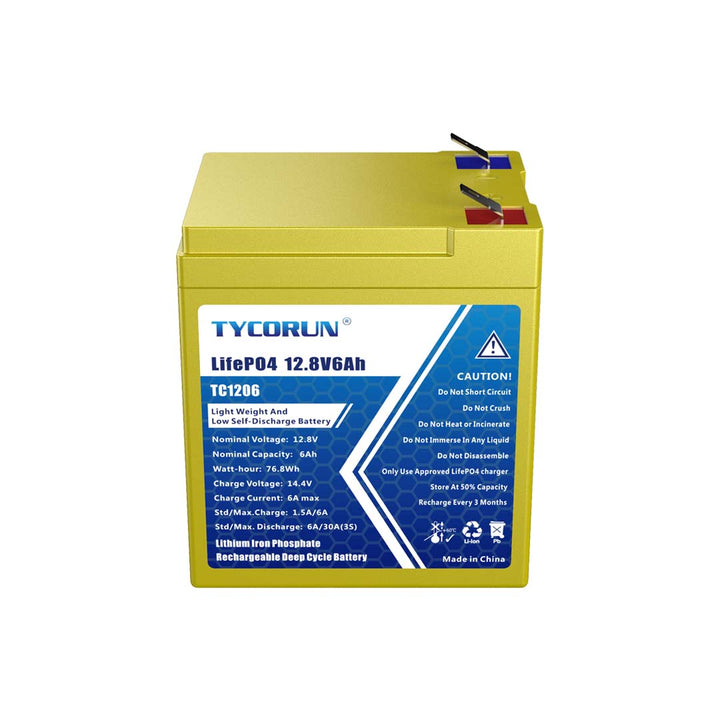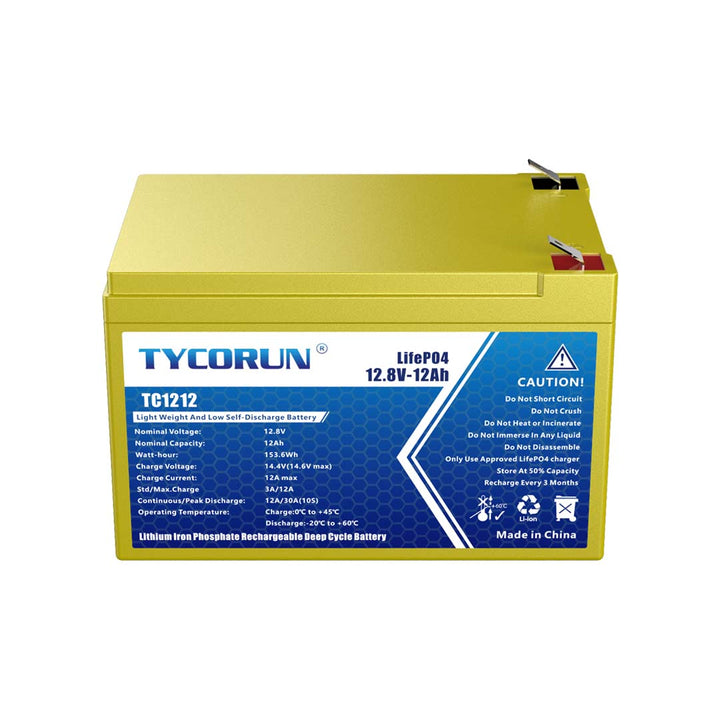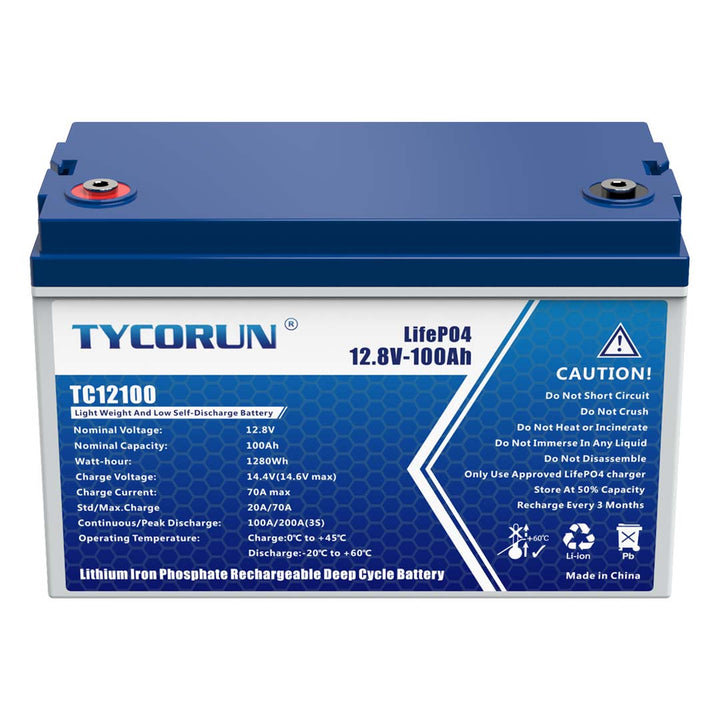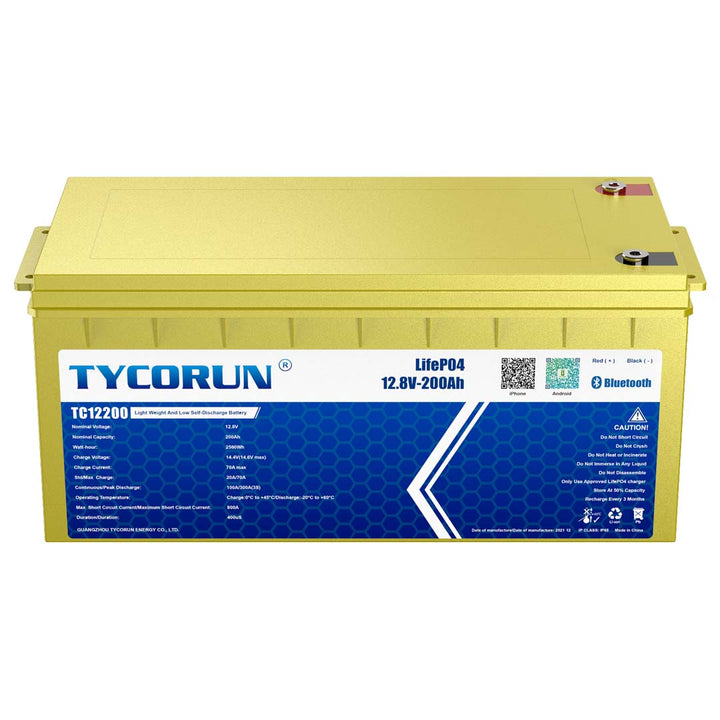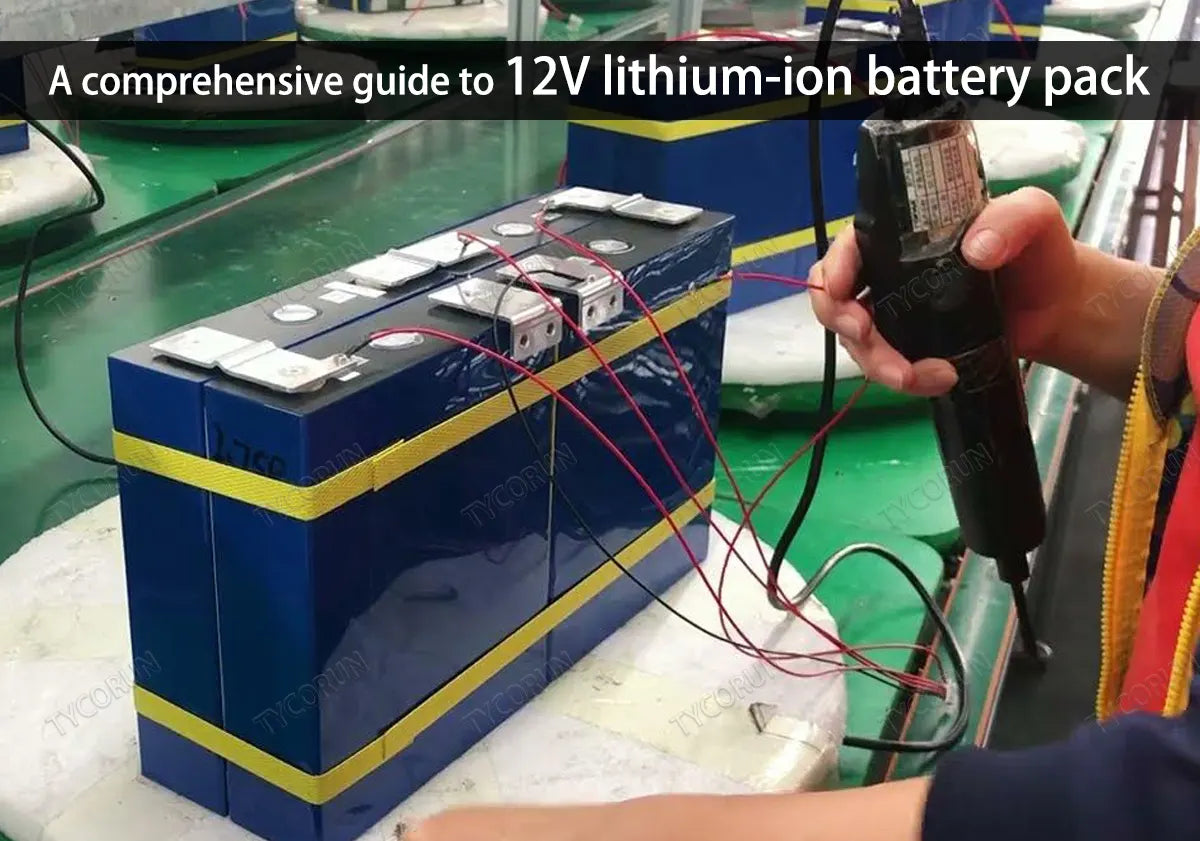
The 12V lithium-ion battery pack emerges as a game-changer in an era where the demand for portable and dependable power is driving innovation. Numerous applications, from supplying energy to entire systems to powering devices, have been revolutionized by these small yet effective energy storage solutions.
This thorough guide will cover every aspect of 12V lithium-ion battery pack, from their fundamental parts to real-world applications, giving you the knowledge and confidence to fully utilize their potential. So let us explore the 12V lithium-ion battery pack world and learn about the potential of portable energy.
Main content:
- What is a 12V lithium-ion battery pack?
- 12V lithium battery pack vs. lead acid battery pack - Which is better?
- Important components in the 12V lithium battery pack and their functions
- Detailed Introduction to the manufacturing process of 12V lithium battery packs
- Common specifications of 12V lithium battery packs
- How to design a 12V lithium battery pack
- How to judge the quality of a 12V battery pack
- Can I replace a lead-acid battery with a 12V lithium battery pack? What factors to consider?
- How to use the 12V lithium-ion battery pack
- Where to buy 12V battery packs
- FAQs about 12V lithium-ion battery packs
What is a 12V lithium-ion battery pack?
A 12V lithium-ion battery pack is a versatile and powerful energy storage solution designed to provide a stable 12-volt output for various applications. It is a battery pack composed of 4 lithium-ion cells connected in series and parallel to meet the power demand of the application.
These battery packs have gained widespread popularity due to their lightweight nature, high energy density, long cycle life, and low self-discharge rates. They serve as reliable power sources for a wide range of devices and systems, from portable electronics to recreational vehicles, making them an essential component in today's technology-driven world.
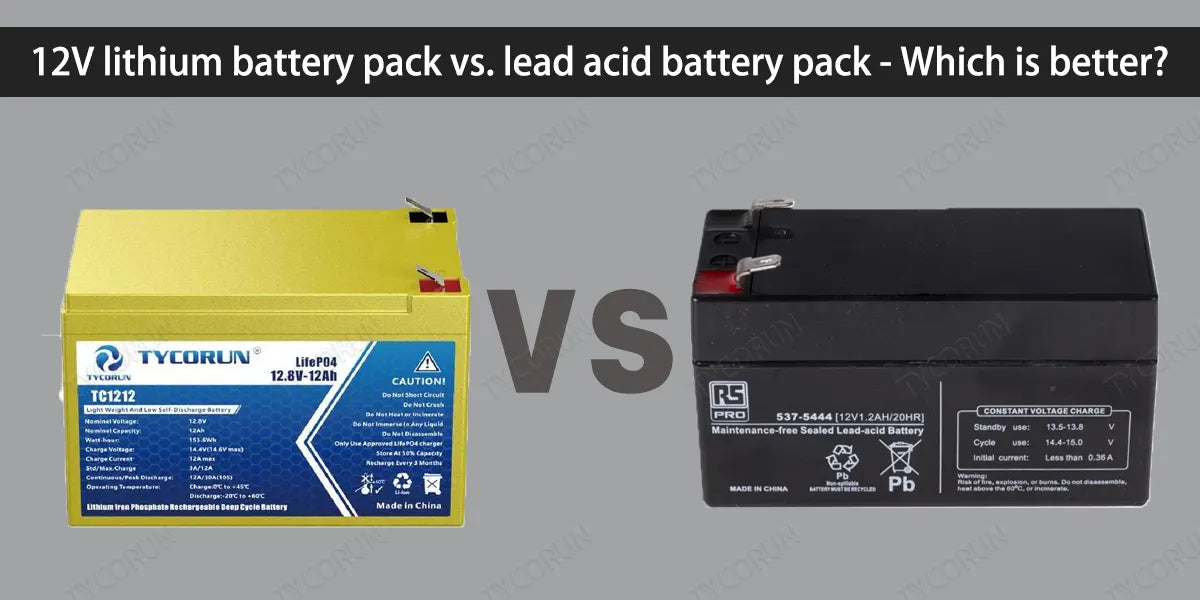
12V lithium battery pack vs. lead acid battery pack - Which is better?
When comparing 12V lithium-ion battery pack to traditional lead acid battery packs, it becomes evident that lithium-ion technology offers several distinct advantages.
● Lithium-ion battery packs
Longer cycle life: Compared to lead-acid batteries, lithium-ion packs have a longer cycle life. The fact that they can withstand thousands of charge-discharge cycles means that they will last longer in use.
Low self-discharge rate: Lithium-ion batteries do not lose their charge as quickly when they are not in use, which means less frequent recharging is required. The self-discharge rate of lithium-ion batteries is only 3.5% per month, which is much less than that of lead-acid batteries.
Lightweight: Compared to lead-acid batteries, lithium-ion batteries are much lighter since their high energy density, making them ideal for portable applications.
Maintenance free:Lithium batteries require no maintenance, saving maintenance time and costs.
Environmentally friendly: Compared to lead acid batteries, the components of lithium batteries are environmentally friendly, causing no pollution.
● Lead acid battery packs
Bulkier: Compared to lithium-ion battery packs of comparable capacity, lead acid battery packs are heavier and bigger.
Leaner lifespan: Lead acid batteries have a leaner life and might need to be replaced more frequently.
Less effective: They are less effective at storing and discharging energy.
Frequent maintenance: The electrolyte of lead-acid batteries is lead-acid, which is prone to leakage or freezing in winter, so maintenance is required every 3-6 months.
Pollution: Lead-acid will pollute the environment.
Therefore, Due to their higher energy density, longer cycle life, lower self-discharge rates, and lightweight design, 12V lithium-ion battery pack are the better option for the majority of applications.
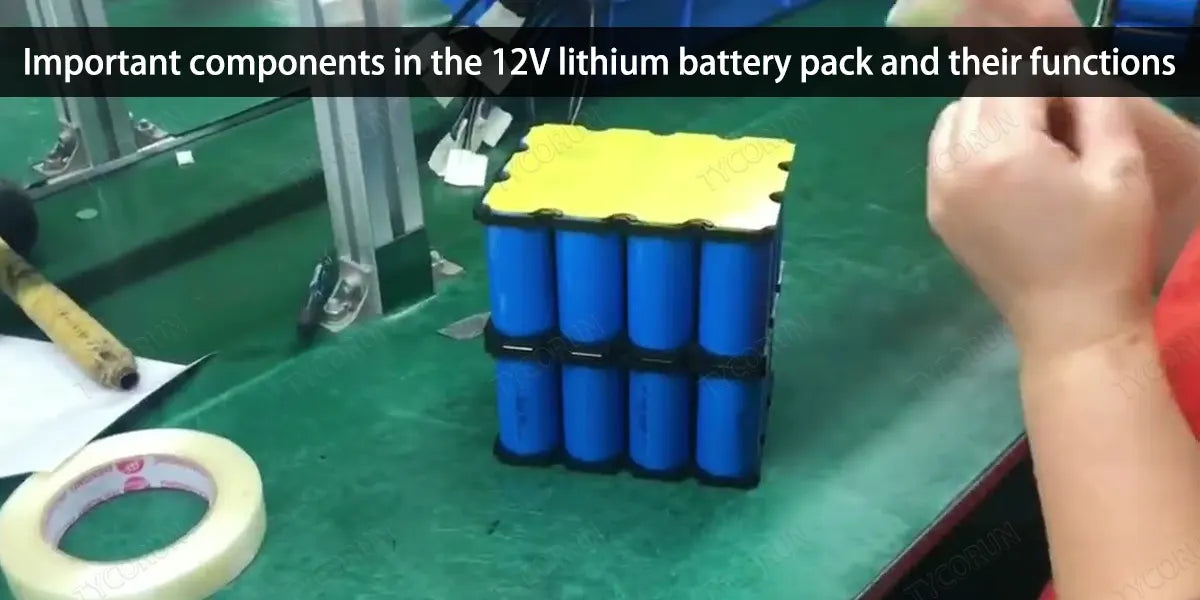
Important components in the 12V lithium battery pack and their functions
A 12V lithium-ion battery pack comprises several key components, each playing a crucial role in its overall performance and safety:
Lithium-ion cells: These are the heart of the battery pack, responsible for storing and releasing energy. The quality and capacity of these cells significantly impact the performance of the battery pack.
Battery management system (BMS): The BMS is a crucial part that keeps track of and monitors each cell in the pack. It makes sure that charging and discharging are balanced, guards against excessive charging and discharging, and keeps an eye on the cells' temperature to prevent overheating.
External structure: Mainly includes external structural fixings, shells, external connectors, wires, charge and discharge interfaces and other accessories.
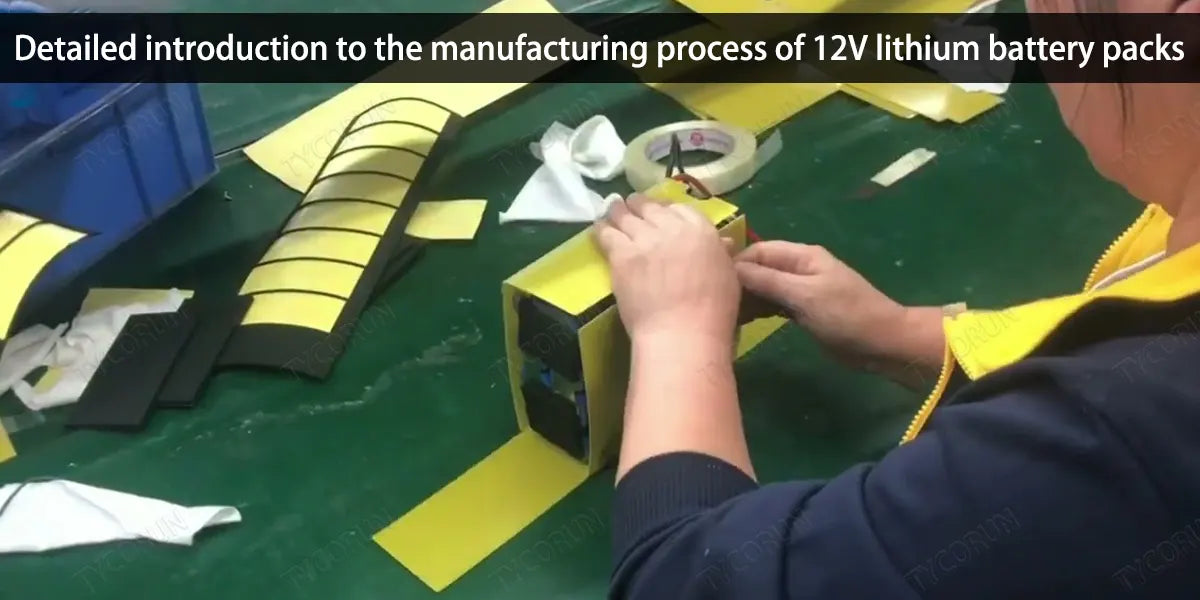
Detailed Introduction to the manufacturing process of 12V lithium battery packs
The manufacturing process of 12V lithium-ion battery pack involves several critical steps to ensure the final product meets safety and performance standards. Let's take a closer look at these steps:
Cell selection: The process begins with the careful selection of high-quality lithium-ion cells. These cells must meet specific capacity, voltage, and discharge rate requirements.
Cell assembly: Selected cells are assembled into a battery pack configuration that suits the intended application.
Battery management system (BMS) Integration: The BMS is integrated into the battery pack to monitor and manage the cells. This includes ensuring that cells are charged and discharged evenly to prevent overcharging or over-discharging. Quality testing: This includes tests for capacity, voltage regulation, temperature management, and overall functionality.
Common specifications of 12V lithium battery packs
12V lithium-ion battery pack comes in a range of specifications, each tailored to different requirements and applications. Let's take TYCORUN’s 12V lithium-ion battery packs as an example, to explore some common specifications and their respective parameters:
|
|
12v 6ah
|
12v 12ah
|
12v 100ah
|
12v 200ah
|
|
Product image
|
||||
|
Price & Discount
|
$49.00(-29%)
|
$79.99(-33%)
|
$579.99(-27%)
|
$999.99(-44%)
|
|
Charge Current
|
1.2A
|
2.4A
|
20A
|
20A |
|
Discharge Current
|
6A |
12A |
100A |
100A |
|
More information |
Click to get the details |
Click to get the details |
Click to get the details |
Click to get the details |
These specifications cater to a wide range of needs and applications, allowing users to select the most appropriate 12V lithium-ion battery pack for their specific requirements.
How to design a 12V lithium battery pack
A 12V lithium-ion battery pack's design is an essential step in ensuring its usability, security, and effectiveness. Here are the key considerations and steps involved in designing such a battery pack:
- Assess power requirements: Begin by determining the power requirements of the application. Consider factors such as the voltage and current needed for the devices or systems the battery will power.
- Cell selection: Choose high-quality lithium-ion cells that match the capacity and voltage requirements of the application. Ensure the selected cells are from reputable battery stores with qualifications.
- Configuration: Determine whether the cells will be connected in series, parallel, or a combination of both to achieve the desired voltage and capacity. The configuration impacts the overall performance and voltage stability of the pack.
How to judge the quality of a 12V battery pack
Quality assessment includes examining the BMS, cell quality, enclosure durability, and safety certifications. Reputable battery stores provide warranties and adhere to industry standards.
Can I replace a lead-acid battery with a 12V lithium battery pack? What factors to consider?
Yes, you can. Transitioning from lead acid to lithium-ion requires evaluating compatibility, voltage requirements, and charging systems. Be careful not to replace the battery that does not match the previous battery capacity and voltage, otherwise the device will not be able to function normally, or even result in safety accidents in severe cases. It's essential to consult with experts to ensure a smooth switch.
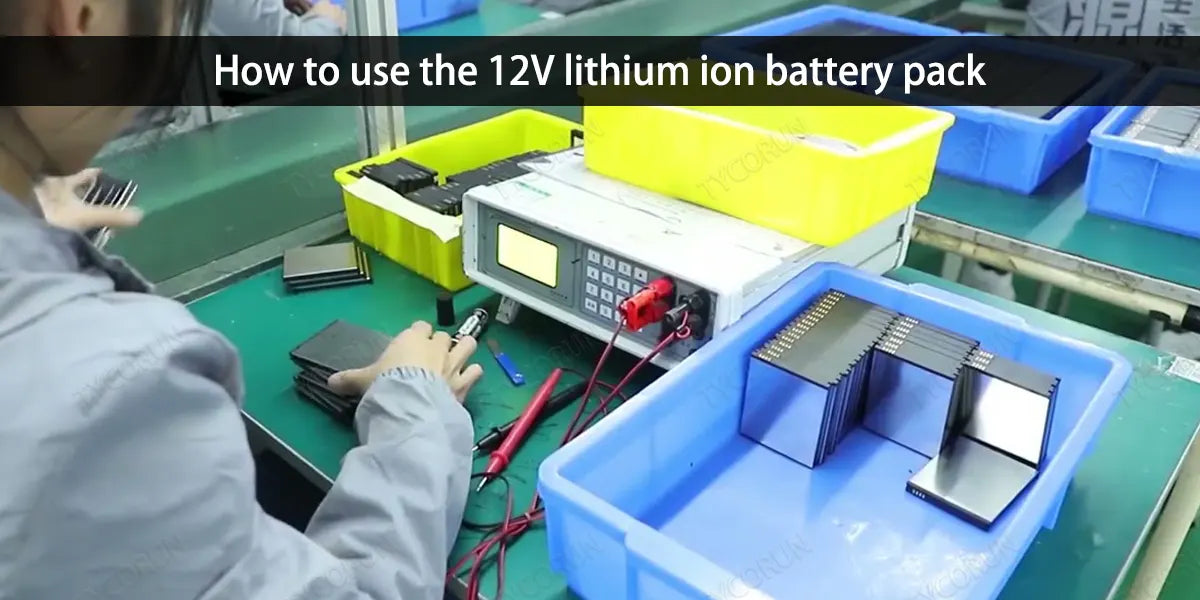
How to use the 12V lithium-ion battery pack
A 12V lithium-ion battery pack's performance and lifespan must be maximized by knowing how to use it. Here are key aspects of using these battery packs:
● Installing the 12V battery pack
Properly connect the portable 12V battery pack to your devices or systems using appropriate connectors and wiring. Ensure the correct polarity to prevent damage. If necessary, securely mount the battery pack in the intended location, ensuring that it is protected from physical damage and environmental factors.
Consider the need for ventilation, especially if the battery pack generates heat during operation. Adequate ventilation helps dissipate heat and prevent overheating.
● Charging a 12V battery pack
When charging from the mains, use a compatible charger designed for lithium-ion batteries. Follow the manufacturer's recommendations for charging voltage and current settings.
If using solar panels, connect them to a charge controller that is compatible with lithium-ion batteries. Ensure proper sizing of the solar array to charge the battery pack effectively.
● Maintaining the 12V battery pack
Periodically inspect the battery pack for physical damage, loose connections, or signs of wear. Address any issues promptly to prevent safety hazards. Keep an eye on the operating temperature of the battery pack. If it exceeds the recommended limits, take measures to cool the pack or reduce the load.
Depending on the application, consider conducting capacity tests to assess the battery pack's performance over time. A 12V lithium-ion battery pack must be installed, charged, and maintained correctly in order to be used safely and effectively. For specific recommendations, always refer to the instructions and guidelines.

Where to buy 12V battery packs
When looking to purchase a 12V lithium-ion battery pack, you have several options to consider:
Find a battery store online: Numerous reputable online retailers specialize in batteries and energy storage solutions. These stores often offer a wide selection of portable 12V battery packs with various specifications. For more information of the best product at best price, you can click to check TYCORUN’s 12v battery products!
Search for a 12V battery pack near me: Local battery specialty stores may carry portable 12V battery packs. You can use online directories or search engines to find battery near me in your vicinity.
When making a purchase, be sure to consider factors such as product specifications, brand reputation, warranty, and customer reviews to ensure that you select the right portable 12V battery pack for your needs.
FAQs about 12V lithium-ion battery packs
How to make a 12V 18650 battery pack
Creating a 12V 18650 battery pack involves selecting and connecting multiple 18650 lithium-ion cells in the appropriate configuration. Here are the general steps:
- Gather the required number of 12v 18650 battery cells with the same capacity and voltage.
- Decide on the desired capacity (Ah) and voltage (12V).
- Connect the cells in series by soldering or using battery holders, ensuring proper polarity.
- Install a suitable BMS to manage the cells and provide protection.
- Enclose the cells in a protective casing.
- Connect the 12v 18650 battery pack to your intended application, ensuring proper wiring.
How to connect 4 12V batteries to make 24V
To create a 24V battery bank from four 12V batteries, follow these steps:
- Connect the first pair of batteries in series. The remaining terminals are used as the 24V output.
- Join the positive and negative terminals together to connect the last two pairs in parallel. A 24V battery bank with the capacity of all four batteries will be produced by this configuration.
How long does it take to charge a 12V battery at two amps?
The capacity and current state of charge of the battery determine how long it will take to charge a 12V battery at 2 amps. To estimate the charging time, you can use the formula:
Charging Time (hours) = (Battery Capacity in Ah) / (Charging Current in Amps)
For example, if you have a 12V battery with a capacity of 50 Ah and you are charging it at 2 amps:
Charging Time = 50 Ah / 2 A = 25 hours
It would take approximately 25 hours to fully charge the 50Ah battery at a 2-amp charging rate.
How long will a 12V battery last with an inverter?
The duration a 12V battery will last when powering an inverter depends on several factors, including:
- Battery capacity (Ah): A higher-capacity battery will last longer.
- Inverter efficiency: Inverters are not 100% efficient; some energy is lost as heat during the conversion process.
- Load: The power requirements of the devices connected to the inverter.
To estimate the runtime, you can use the formula:
Runtime (hours) = (Battery Capacity in Ah) / (Inverter Load in Watts x Inverter Efficiency)
For example, if you have a 12V battery with a capacity of 100Ah, an inverter with an efficiency of 90%, and you are powering a 300W load:
Runtime = (12v x 100 Ah) / (300W x 0.90) = approximately 4.44 hours
The battery would last approximately 4.44 hours under these conditions.
